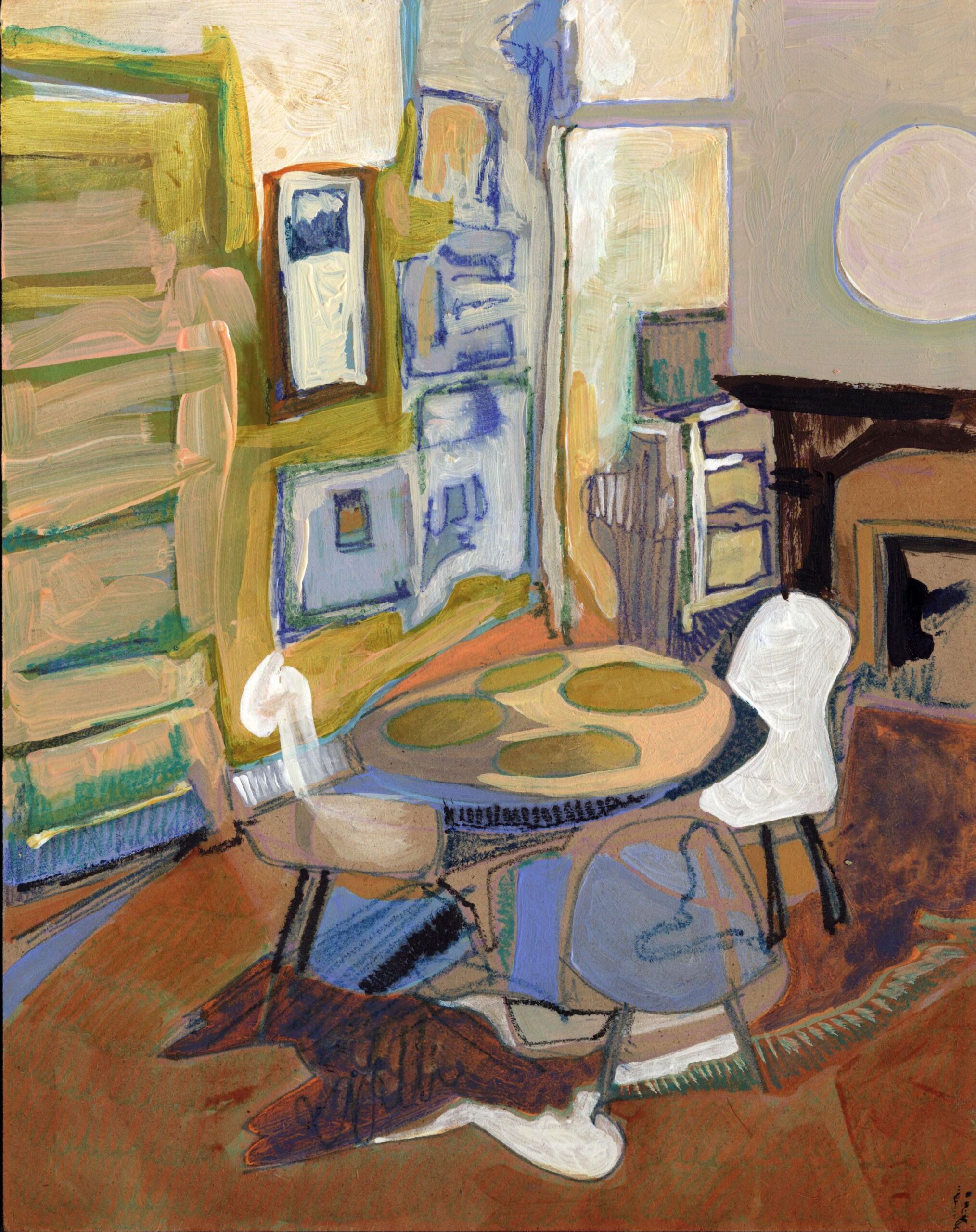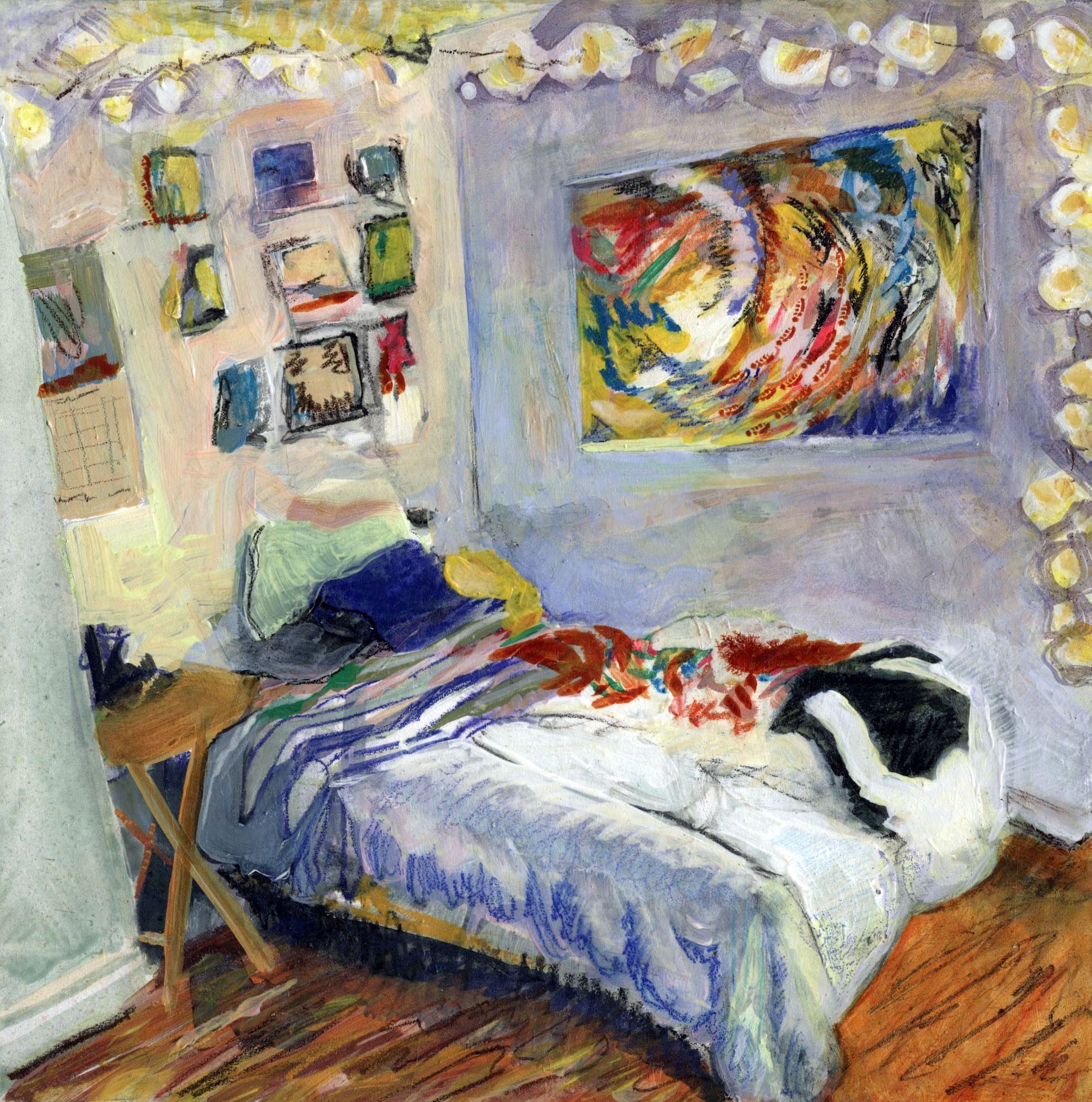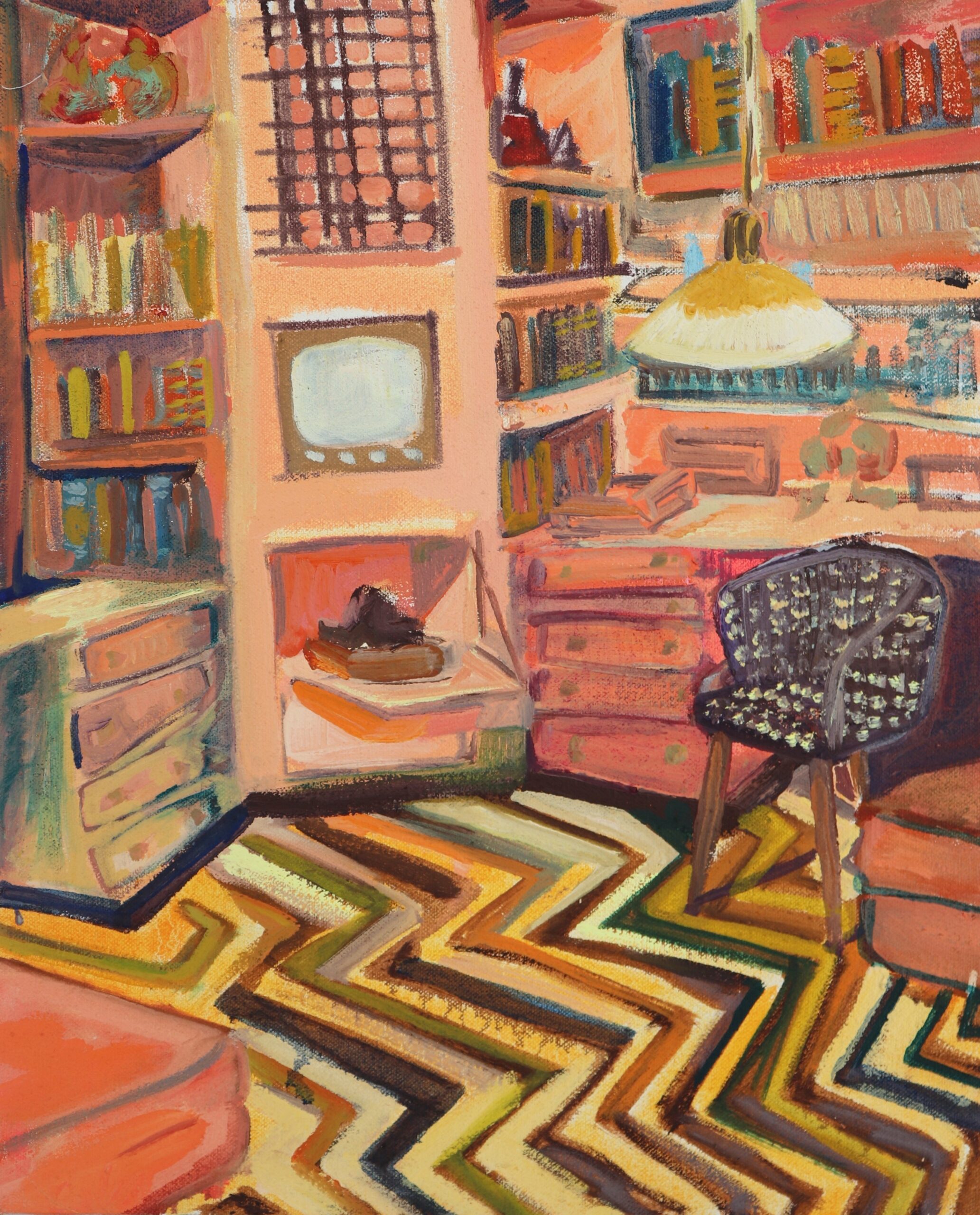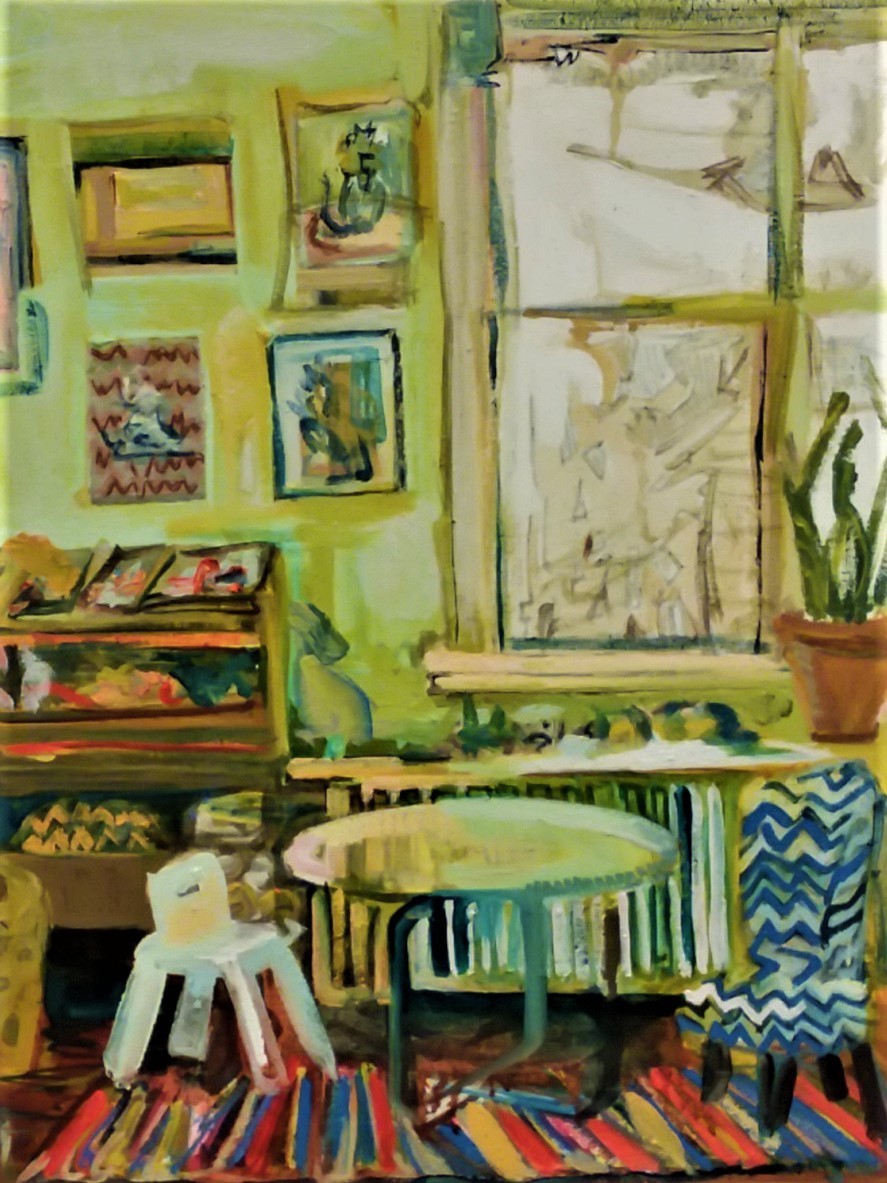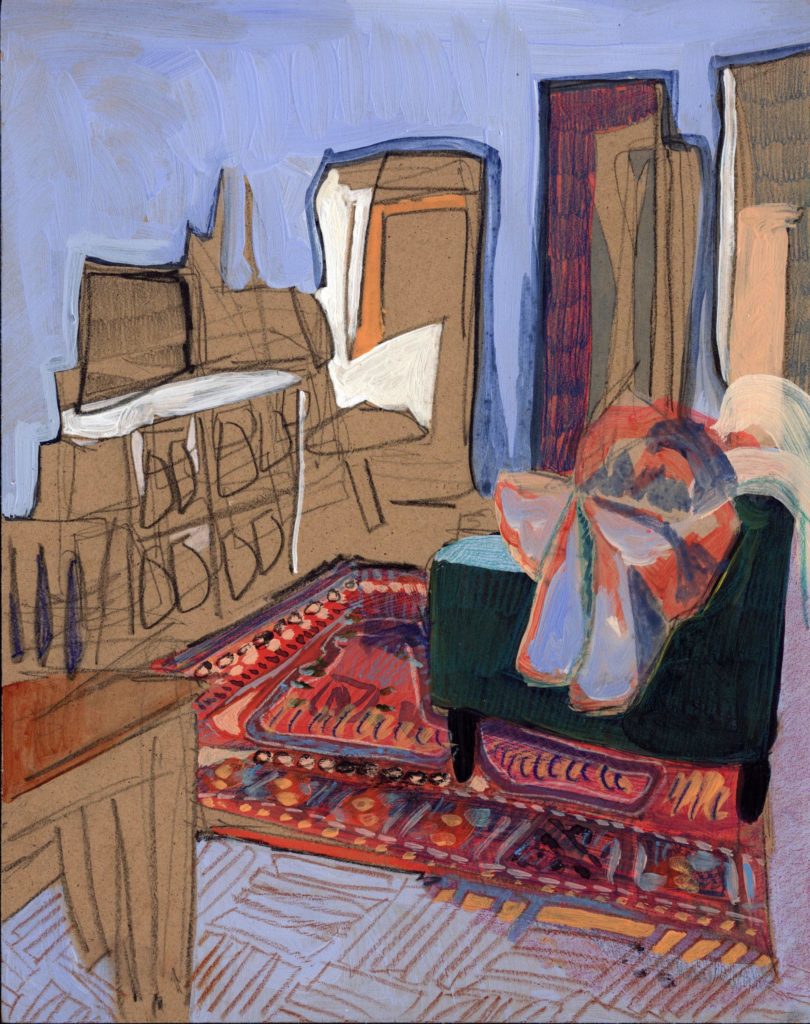
Erika Stearly has been painting since she was a kid in Pennsylvania. After graduate school, she began to focus her work on the interior lives of residents in the various college towns she lived in. This past summer, she received a visiting faculty fellowship at Kutztown University, and the resulting exhibition, Play |House, focuses on eclectic interior spaces. Here, she discusses the reasons why she’s drawn to the lives of strangers and what objects in a room say about the people who inhabit that space.
“I’ve been making these interior scenes for the past 10 years or so. For a long time, they were oil paintings as tall as me, so you could feel like you were in the room or space itself. I now live in a one-bedroom apartment and couldn’t safely continue to work with oil-based paints, so I transitioned to water-based paints. I work on paper these days, and my paintings are much smaller—I can make over 100 of them in a year. Originally, the works that I was making were, broadly speaking, images that I’ve found through various magazines, both current and vintage. I have a lot of magazines from the ’60s and ’70s that I use to create these spaces.
But for the past five years, I’ve been depicting spaces that I’ve seen and photographed myself. Generally, it’s student housing. I’ve lived in college towns for most of my adult life, so I frequently make paintings of where students live. In this part of Pennsylvania, I see a lot of single-family homes with quirky qualities. For instance, one of the apartments that I painted was an attic. It was subdivided into equally sized rooms, so the bathroom was the same size as the living room and the kitchen. The residents put a coffee table and lawn chairs in the bathroom and would have their coffee in there every morning with the dog because it had the best light. It was very bizarre—who puts a lawn chair and a coffee table in the bathroom?
You can’t make the things up! I didn’t realize, for example, that every college kid in America owns an orange traffic cone—I would see them everywhere. Or when I would go to apartments inhabited by groups of young men, they always had an American flag. The things that we have in our daily lives, they’re never pictured in home furnishing catalogues or when your house is photographed by real estate agents. There are no people in my paintings, but there’s evidence of their lives. Someone could walk in at any moment.”

